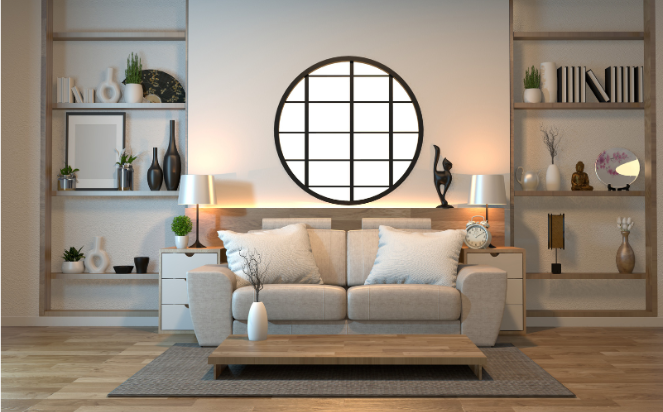Japanese aesthetics have long influenced design principles worldwide, emphasising simplicity, natural materials, and harmonious living spaces. In Singapore, where landed houses offer ample space for creativity, homeowners seeking tranquillity and elegance have increasingly embraced Japanese-inspired interiors. A thoughtful approach to landed house interior design in Singapore can transform a residence into a serene retreat, integrating elements that reflect the beauty of nature and the art of minimalism.
With the expertise of an interior design company, it is possible to achieve a balance between traditional Japanese elements and modern sensibilities. By incorporating principles such as wabi-sabi, shoji screens, and organic textures, homeowners can create interiors that feel both refined and inviting. This article explores essential components of Singapore landed house design inspired by Japanese aesthetics, offering insights into key materials, layout considerations, and design features.
The Essence of Japanese-Inspired Design
Japanese-inspired interiors focus on simplicity, balance, and a seamless connection with nature. A landed interior design in Singapore that takes cues from Japanese principles typically favours open layouts, natural light, and earthy tones. Spaces are designed to encourage calmness, removing unnecessary clutter to maintain visual and spatial harmony.
Neutral beige, soft greys, and muted browns provide a soothing backdrop, allowing wooden textures and handcrafted elements to stand out. Flooring choices frequently include light-toned timber or tatami mats, adding warmth and authenticity to the space. In addition, sliding doors or shoji screens replace traditional partitions, offering flexibility while preserving the fluidity of movement within the home.
A well-structured landed house interior design in Singapore also considers furniture placement carefully. Low-height furnishings, such as chabudai tables and floor cushions, reflect Japanese traditions, encouraging an informal and relaxed atmosphere. By focusing on a restrained aesthetic, homeowners can cultivate a living space that embodies quiet elegance and mindfulness.
Integrating Natural Elements
A strong connection to nature is a defining feature of Japanese-inspired interiors. In Singapore landed house design, this connection can be established through the strategic use of materials, indoor gardens, and biophilic elements. Wood remains a dominant choice, often seen in beams, flooring, and built-in cabinetry, contributing to a warm and organic feel. Natural stone, clay walls, and bamboo accents further enhance the aesthetic.
Large windows and sliding glass doors promote a seamless transition between indoor and outdoor spaces, maximising natural light and ventilation. This openness aligns with the Japanese philosophy of appreciating seasonal changes and integrating them into daily life. Indoor gardens or courtyards, complete with bonsai trees, pebbled pathways, and water features, introduce a meditative quality to the home.
Tatami rooms or tokonoma alcoves serve as focal points in a landed interior design in Singapore, offering a space for quiet contemplation. These areas are often adorned with a single artwork, a carefully chosen vase, or a traditional scroll, reflecting an appreciation for minimal yet meaningful décor.
Functionality and Space Optimisation
Japanese-inspired interiors prioritise functionality without compromising aesthetic appeal. This is particularly relevant for landed house interior design in Singapore, where space can be optimised through intelligent storage solutions and multi-purpose furnishings. Built-in cabinets, concealed storage compartments, and modular furniture ensure that living areas remain uncluttered while maintaining a cohesive visual flow.
An interior design company specialising in Japanese aesthetics will often recommend tatami platforms with underfloor storage or futons that can be neatly tucked away during the day. Shoji screens serve a dual function, acting as partitions while allowing natural light to filter through. These elements contribute to a sense of openness, even in compact spaces.
Kitchen and bathroom designs also adhere to the principles of efficiency and simplicity. In a Singapore landed house design, kitchens often feature streamlined cabinetry, wooden countertops, and integrated appliances to maintain a clean aesthetic. Bathrooms adopt spa-like qualities, incorporating hinoki wood bathtubs, stone basins, and natural lighting to create a tranquil retreat.
Lighting and Ambience
Lighting plays a crucial role in achieving an authentic Japanese-inspired atmosphere. Soft, diffused lighting enhances the tranquillity of landed interior design in Singapore, creating an inviting and calming environment. Paper lanterns, pendant lights with wooden frames, and recessed lighting help achieve the desired warmth without overwhelming the space.
Layered lighting techniques ensure that different areas serve distinct functions while maintaining cohesion. Task lighting is incorporated subtly, such as hidden LED strips under shelves or soft-glow lamps placed near seating areas. Natural light remains a primary focus, with sheer curtains or bamboo blinds allowing gentle illumination while preserving privacy.
Evening lighting should evoke a sense of serenity, mirroring the soft glow of traditional lamps. This approach enhances relaxation and aligns with the understated elegance characteristic of Japanese-inspired interiors.
A Japanese-inspired landed house interior design in Singapore embodies timeless beauty, serenity, and a deep respect for nature. By integrating natural materials, functional layouts, and harmonious lighting, homeowners can create living spaces that promote peace and balance. Through subtle architectural details, indoor gardens, or refined furnishings, every element contributes to a cohesive and elegant home environment.
Looking to transform your living space with a Japanese-inspired design? Contact Interior Times today to explore bespoke solutions tailored to your vision and create an inviting sanctuary within your home.
